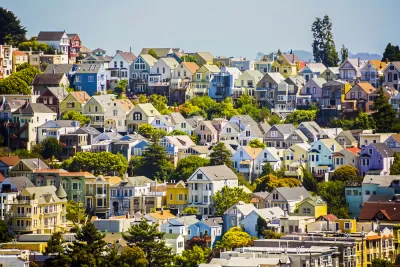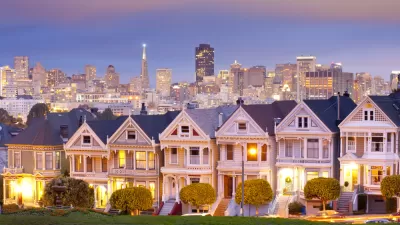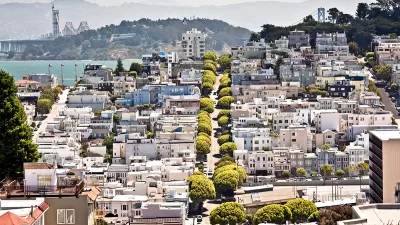Mayor Ed Lee this week proposed a density bonus policy that would help the city build approximately 16,000 new units of housing, including 5,000 affordable units along select transit corridors.

"Neighborhoods across the west side of San Francisco could see thousands of new housing units under a measure Mayor Ed Lee is proposing that would allow builders to exceed current height restrictions in exchange for including more affordable units," reports J.K. Dineen. "The affordable housing bonus program, which will be introduced at the Board of Supervisors Tuesday, would allow an extra two stories of height on projects that include 30 percent affordable units and an extra three stories on 100 percent affordable developments."
The density bonuses would offer a unique addition to San Francisco building envelope. Dineen notes that neighborhoods like SoMa, Rincon Hill, Mission Bay, Upper Market, and Dogpatch were recently up-zoned, leading to waves of new development. The density bonuses, however, "would apply to transit corridors that have not been rezoned" including Noriega Street, Taraval Street, Geary Boulevard, Irving Street, Ocean Avenue, Balboa Street, and Fulton Street.
The article also cites an analysis finding 240 underutilized parcels that could accommodate new development in those new areas, with the potential for 16,000 new units, "about 5,000 of which would be affordable." The article includes more on the income levels that will be able to afford the units generated by the program.
Mayor Ed Lee announced a goal to "to build or rehabilitate 10,000 units for low-income and working-class families by 2020" earlier this month.
FULL STORY: S.F. Mayor Ed Lee proposes deal to spur more low-cost housing

Planetizen Federal Action Tracker
A weekly monitor of how Trump’s orders and actions are impacting planners and planning in America.

Chicago’s Ghost Rails
Just beneath the surface of the modern city lie the remnants of its expansive early 20th-century streetcar system.

San Antonio and Austin are Fusing Into one Massive Megaregion
The region spanning the two central Texas cities is growing fast, posing challenges for local infrastructure and water supplies.

Since Zion's Shuttles Went Electric “The Smog is Gone”
Visitors to Zion National Park can enjoy the canyon via the nation’s first fully electric park shuttle system.

Trump Distributing DOT Safety Funds at 1/10 Rate of Biden
Funds for Safe Streets and other transportation safety and equity programs are being held up by administrative reviews and conflicts with the Trump administration’s priorities.

German Cities Subsidize Taxis for Women Amid Wave of Violence
Free or low-cost taxi rides can help women navigate cities more safely, but critics say the programs don't address the root causes of violence against women.
Urban Design for Planners 1: Software Tools
This six-course series explores essential urban design concepts using open source software and equips planners with the tools they need to participate fully in the urban design process.
Planning for Universal Design
Learn the tools for implementing Universal Design in planning regulations.
planning NEXT
Appalachian Highlands Housing Partners
Mpact (founded as Rail~Volution)
City of Camden Redevelopment Agency
City of Astoria
City of Portland
City of Laramie





























